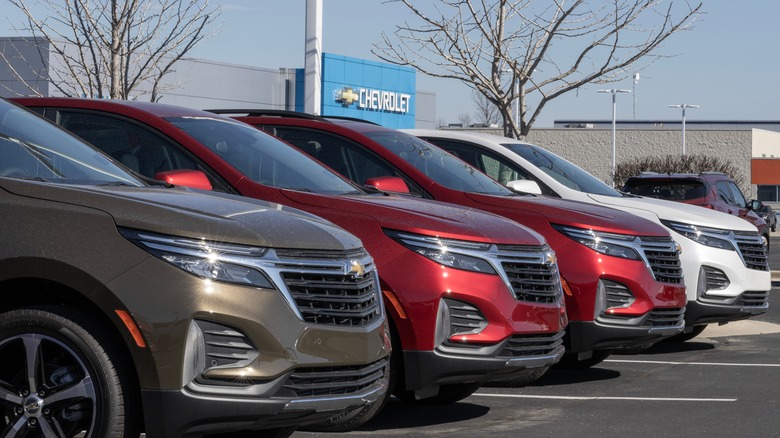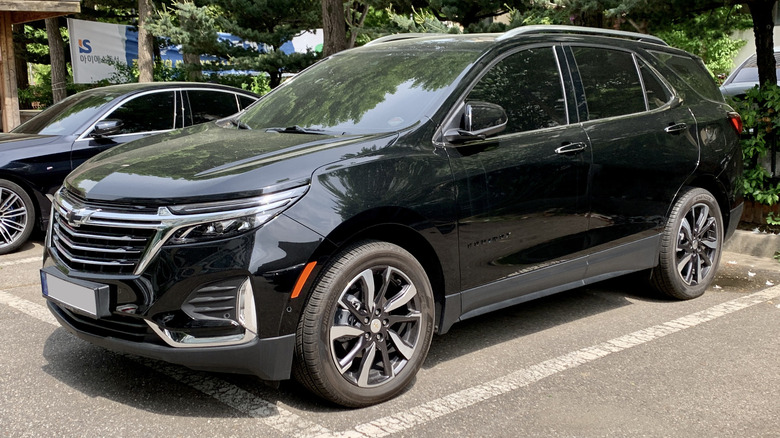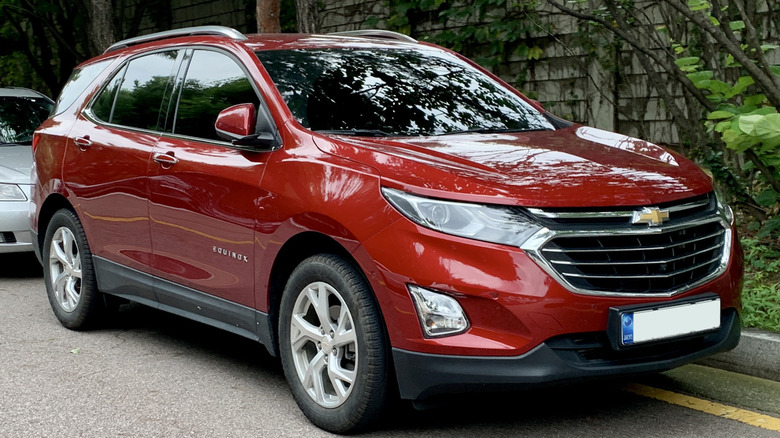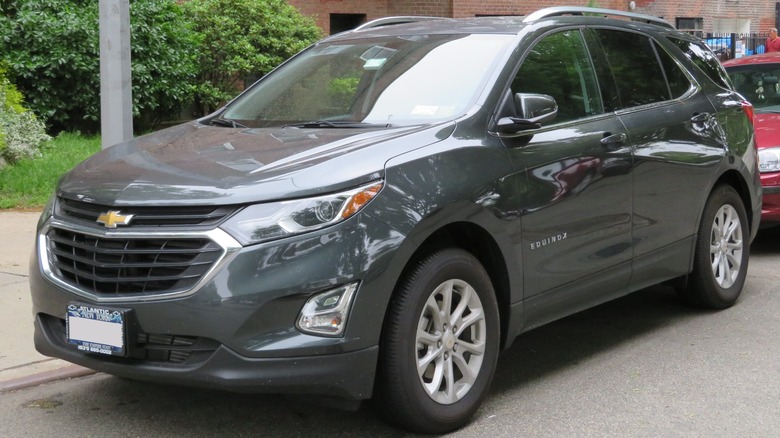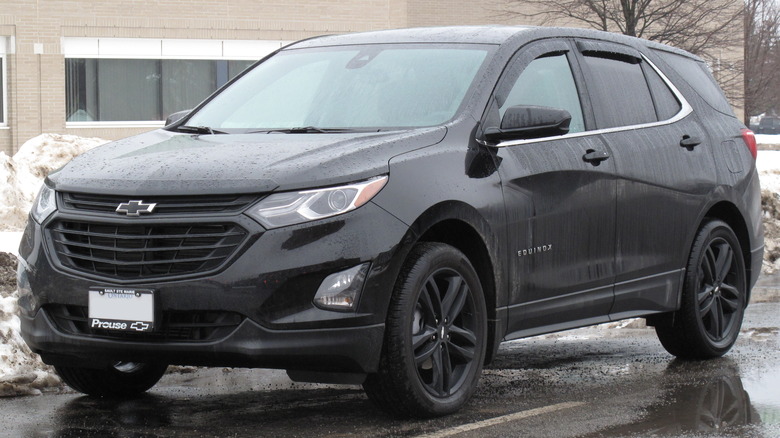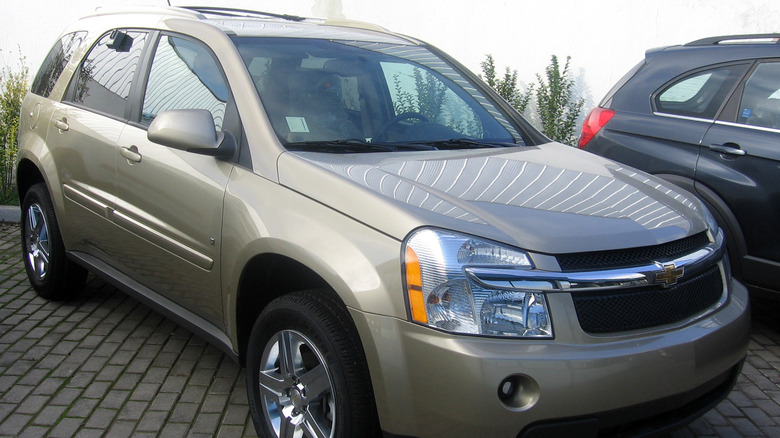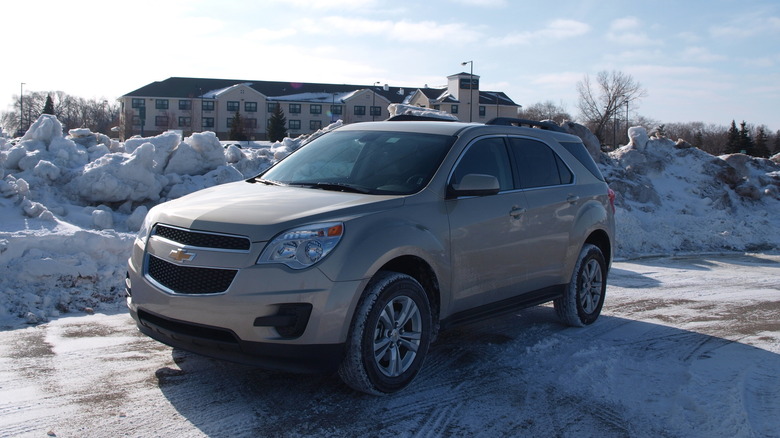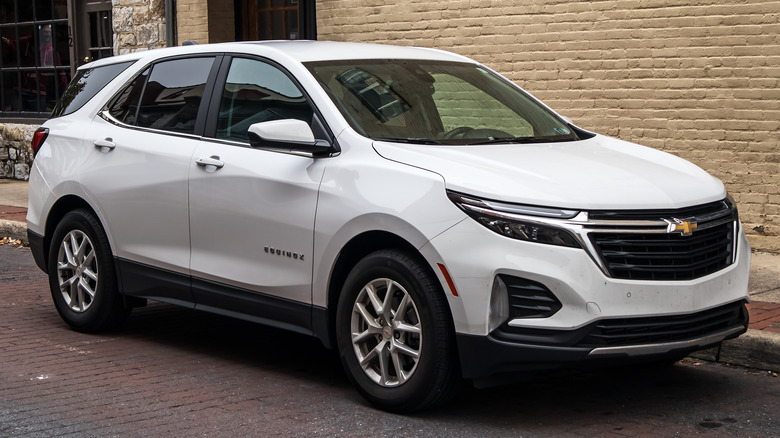The Best Years For Chevy Equinox (And Some To Avoid)
Since its introduction in 2005, the Chevrolet Equinox has been a key player in Chevrolet's small SUV class. It replaced the popular Chevy Tracker and the S-10, one of the most iconic Chevrolet models ever built, and has since solidified its position as Chevrolet's premier small SUV offering. The 2024 Equinox EV is already being compared favorably to competitors.
Unlike larger counterparts like the Tahoe and Suburban, the Equinox is designed with a focus on comfort and fuel efficiency. It's not based on a truck chassis, which gives it a smaller, more efficient, and less robust feel. This design, while not for everyone, makes it a practical choice for everyday tasks like grocery shopping.
With a career spanning two decades and four generations, the Equinox has proven to be a reliable choice for Chevrolet. However, potential buyers need to understand that not all Equinoxes are created equal. Some years stand out for their reliability, while others have had their share of issues. As an amateur gear monkey and passionate four-by-four enthusiast, I've been enjoying four-wheel drive off-road vehicles for decades. We aim to provide clarity by analyzing customer reports, consumer feedback, recall data, and other information points, including NHTSA and IIHS statistics, to clarify which are worthy and which are less so.
Regarding the Equinox, not every vehicle from the following years is guaranteed to be great or terrible. The quality of a used Equinox often depends on its prior maintenance and accident histories. We look at which years would be best to check out and which are best avoided to help you make a more informed decision.
Best: 2009
The first generation of Equinox, by dint of being the oldest, is the most affordable used Equinox on the road. The first generation ran from 2005 to 2009, and while it is generally true that avoiding the first year or two of a generation is wise, especially in a new car, the last year of the first generation makes the best case for purchase.
After a few years of ironing out problems, the 2009 Equinox experienced zero recalls and earned a reputation for reliability. There are four Equinox models to choose from in 2009: the LS, LT, LTZ, and Sport. Each comes with a choice of front-wheel or all-wheel drive, and all power is routed through an automatic transmission. Within each trim package are additional styles that dictate convenience and comfort accessories.
The LS, LT, and LTZ are all equipped with a 3.4-liter V6 engine making 185 hp, while the Sport model gets a 3.6-liter V6 making 264 hp. While the 2009 model is 15 years old and lacks some of the most up-to-date features, it is a good value, with KBB listing a fair purchase price between $4,800 and $6,000.
[Featured image by Benespit via Wikimedia Commons | Cropped and scaled | CC BY-SA 4.0]
Best: 2014-2015
The second generation of the Equinox debuted in 2010 with an updated appearance and engine options. Chevrolet installed a more efficient four-cylinder for the base models while retaining the V6 for those who wanted additional power. From 2012 to 2015, the in-line 2.4-liter four-cylinder made 185 hp, while the 3.0-liter V6 produced 268 hp. In 2013, Chevrolet debuted a 3.6-liter V6 with 306 hp.
Aside from the powertrain, the Equinox received multiple updates that set it above the first generation. The primary difference was an all-new body style based on the previous generation's Theta platform. Buyers still had the choice of all-wheel or front-wheel drive, but the new Equinox looked more modern, which translated to the interior with a redesigned binocular-style dash cluster.
The 2014 model year also denotes an uptick in engine reliability, a trend that would continue over the next several years. Drivers reported fewer problems with their Equinoxes, and the NHTSA praises them for their safety ratings, which should positively impact insurance rates (not to mention personal safety in case of an accident).
[Featured image by Benespit via Wikimedia Commons | Cropped and scaled | CC BY-SA 4.0]
Best: 2017
The 2017 model Equinox garnered a reputation for excellent reliability, achieving a perfect 5 out of 5 rating from Consumer Reports. The final year of the second generation is also new enough to include more modern bells and whistles like lane assist, a 7-inch touchscreen (though it suffers from some reports of being slow to react to inputs), and MyLink with Bluetooth capability on the upper-tier offerings.
The 2017 model also stands out as one of the few that have yet to experience any recall. The four trim levels remain present, though the LTZ received a new moniker, Premier, and the LT trim gained two new packages: Midnight and Sport. The drive train remains the same, though it would change the following year with the introduction of the third generation.
The 2017 Equinox scored a four-star overall safety rating from the National Highway Transportation Safety Administration. It earned praise for its comfortable rear seat and stylish interior. However, some reports of burning oil at high mileage and reduced interior space compared to comparable crossovers like the Mazda CX-50 take some of the gloss off of a solid offering from Chevy.
Currently priced between $8,700 and $12,000, the 2017 Equinox is worth considering if you're in the market for a used crossover, rather than an SUV.
[Featured image by Kevauto via Wikimedia Commons | Cropped and scaled | CC BY-SA 4.0]
Best: 2021
With a few exceptions, the Equinox kept getting better with time. It hit a rough spot when it shifted power plants after the 2017 model year (more on that below), but arrested that skid with a great offering in 2021.
The most recent Equinox on this list includes some minor cosmetic updates, including LED lights, and a black front grill with chrome inserts, but the meat of the changes includes improved safety features. A surround vision camera increases driver awareness, rear collision alert, and adaptive cruise control.
Chevrolet standardized the powerplant in the 2021 Equinox, installing a turbocharged 1.5-liter four-cylinder making 170 hp routed through a six-speed Hydra-Matic transmission. The 2021 model also scored highly with the NHTSA for safety ratings, with five out of five stars in crash tests. Crossover SUVs are popular family vehicles, so safety is paramount when selecting a used vehicle.
The 2021 Equinox underwent four recalls: for child seating mounts, fuel system, tires, and seat belts. However, a diligent buyer can check the VIN number of a prospective Equinox against a government record and ensure the proper recalls have been performed.
[Featured image by Elise240SX via Wikimedia Commons | Cropped and scaled | CC BY-SA 4.0]
Avoid: 2007
First-generation vehicles often have problems that take a few years to work out. Debuting in 2005, the Equinox was still in the "ironing this out" category by 2007. The first-generation Equinoxes come with several irritants that should worry prospective buyers, in addition to likely having the most wear and tear by now.
For starters, the 2007 Equinox received many complaints regarding interior noise. Engine and road noise permeates the cabin, giving the car a less-than-luxurious vibe on long trips. Steering is reported to feel sloppy and numb, and its middling 19/25 city/highway mpg fuel efficiency rating is nothing to write home about.
Despite the road noise and mileage concerns, the 2007 Equinox still garners favorable reviews from critics. However, it's crucial to note one significant issue: safety ratings. Unlike the models that followed, the 2007 Equinox received middling to poor safety ratings from the Insurance Institute for Highway Safety (IIHS). Side impact, head restraints, and seats received a marginal rating, while roof strength was labeled acceptable.
[Featured image by order_242 via Wikimedia Commons | Cropped and scaled | CC BY-SA 2.0]
Avoid: 2010
The first few years of the second-generation Equinox did not fare well in the eyes of buyers. The 2010 model received over 1,000 complaints and three recalls, mostly centering around severe issues like excessive oil consumption and other engine issues. To solve the problems, piston rings had to be replaced in the best case, and in the worst case the whole engine had come out. A spate of timing chain failures in the 2010-2012 V6 models compounded the misery, especially considering the four-cylinder models were the ones eating oil.
Additionally, the 2010 model struggled to keep up with competitors regarding interior comfort or available gadgets. A common GM complaint is that the quality of interior materials is lacking. The NHTSA issued three recalls for this model, including a major issue with the electrical system and powertrain, a seat adjuster default that drops the seat to the lowest position without warning, and a flaw in the defroster/defogger.
Overall, as far as used Equinoxes go, plenty of model years are not plagued by the problems of 2010, making it one of our best to avoid.
[Featured image by resedabear via Wikimedia Commons | Cropped and scaled | CC BY-SA 2.0]
Avoid: 2013
The woes continued for the first few years of the second generation, with the 2013 Equinox also receiving over 1,000 complaints and undergoing a pair of recalls. Chevrolet had yet to fix the engine issues completely. The piston rings are the subject of a class action lawsuit, with lawyers claiming they were defective and wore out prematurely.
Consumer Reports points out several additional flaws. While not as critical as bad piston rings, owners have reported significant problems with the climate system, paint and trim, anti-lock brakes, electrical components, transmissions, steering and suspension, and the fuel system.
The bright side of the 2013 Equinox is that Chevrolet paid more attention to the interior, with premium touches, two-tone colors, and an attractive dashboard. The materials are far from premium but a step up from previous iterations. For all of its mechanical woes, the 2013 Equinox is a lock for our avoid list.
[Featured image by M93 via Wikimedia Commons | Cropped and scaled | CC BY-SA 3.0]
Methodology
Evaluating a used car is a tricky business. Developing an opinion on which are best for consumers and which to avoid takes a holistic approach. Aside from our personal experience as weekend wrench-turners, a slew of data points goes into how we decide which model years are gems and which to avoid. Every car is a product of the treatment it has gotten in the past. While it's impossible to evaluate a specific vehicle sight unseen, we use market value, federal safety information, consumer reports,recall data, and IIHTS and NTHSA information to determine which Tahoes have the best chance of satisfying a buyer.
